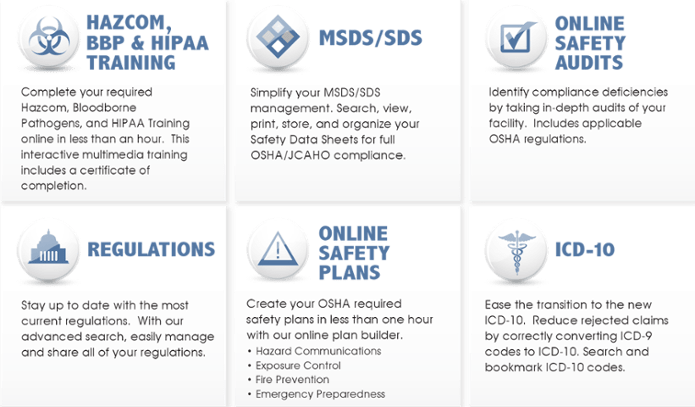Did you know that in the United States, illnesses and nonfatal injuries in the workplace are highest among healthcare workers? On a daily basis, most healthcare providers are exposed to some sort of risk, whether it be a back injury, needlestick, latex allergy, exposure to bloodborne pathogens or violence, and stress.
And it’s not just doctors and nurses who are at risk; all healthcare employees including orderlies, nursing aides, attendants, and those working in equipment maintenance are also at risk of nonfatal injuries and illness.
Though it’s impossible to eliminate all risks associated with working in the healthcare industry, the following 5 safety tips will help your staff avoid extreme situations and reduce their risk of injury or illness.
Avoid Risk of Bloodborne Pathogens
The risk of infection from bacterial and viral infections transmitted through blood and other body fluids is great. All healthcare workers should take necessary precautions and wear protective gear such as goggles and latex gloves, gowns, and faceshields to avoid contamination.
Other areas that require attention are the proper management of exposure to infection-causing micro-organisms within your facility.
Some of the best practices to manage these contamination threats include:
- Practicing proper hand hygiene
- Using antiseptics and disinfectant on skin prior to a surgical procedure or I.V. injection
- Cleaning and decontamination of instruments
Workers who could be exposed must also be immunized against hepatitis B, hepatitis C, and other bloodborne or airborne pathogens.
Be Mindful of SHARPS
Scalpels, needles, and other sharp objects that have been used in medical facilities are usually contaminated, and your staff will often come in contact with them. To avoid getting stuck with a sharp, it’s important to follow an appropriate disposal system for all sharps and infectious waste.
Also, consider reducing or eliminating the risk of sharp injuries by
- Disposing of syringes at the point of use in a safety box
- Not recapping needles
- Using blunt suture needles and scalpel blades with rounded tips
Reduce Risk of Injuries
Avoid risks such as musculoskeletal injuries that affect bones, muscles, ligaments, nerves and joints are common with medical professionals who often have to lift immobile patients or transfer them between wheelchairs and beds, toilets, or exam tables. To prevent these injuries, ensure your staff uses assistive devices such as slings, slip sheets, and electronic hoists.
Train Employees on Chemical Hazard Safety
Some chemicals used in the healthcare industry like mercury, phthalates, bisphenol A, and triclosan may cause serious harm to your staff. According to OSHA, medical facilities need to train employees on how to handle hazardous substances safely. In addition, healthcare professionals must wear gloves and personal protective equipment while handling these hazardous chemicals.
Provide Fire Safety Training
Healthcare facilities that contain flammable gas and other materials such as oxygen, methane, hydrogen, nitrous oxide, plastic masks, antiseptic agents, and cloth drapes are going to have more of a fire risk. Employees must be trained in fire safety and take proper precautions.
While it’s true healthcare workers are always going to be more at risk of on-the-job illness and injury than other professions, there are ways to prevent or at least minimize these risks.
One final way is to use the services of a qualified medical waste management company who can provide you with the proper containers and dispose of your waste for you so your staff stays safe and you remain compliant. If you aren’t currently working with a waste management company, or are looking for a new partner, please give us a call. We’d love to help you have peace of mind.



